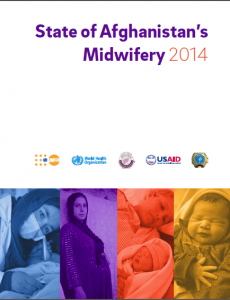
In July 2014, the United Nations Population Fund (UNFPA), in partnership with the World Health Organization (WHO) and the International Confederation of Midwives (ICM) released the second State of the World’s Midwifery report which reports on 73 low- and middle-income countries including Afghanistan. Together, these countries account for more than 92 per cent of the world’s maternal and neonatal deaths, yet have only 42 percent of its qualified birth attendants.
In Afghanistan itself, a woman dies every two hours from causes related to pregnancy. The report points out that midwives can substantially reduce maternal and neonatal mortality. Based on these findings, The State of the World’s Midwifery 2014 report sets the global agenda for midwifery through Midwifery2030, a policy and planning pathway which strengthens midwife-led models of care through four related domains which, collectively, create the conditions for strong and effective midwifery. These domains are:
Availability. Skilled personnel are available and able to provide the services necessary for maternal and new-born health.
Accessibility. All essential services are available to women when and where they are needed.
Acceptability. Cultural and social needs are taken into account when delivering maternal and neonatal health care.
Quality. Midwifery education, regulation and professional associations are strengthened so as to ensure a high quality of care.
Throughout the process of developing The State of the World’s Midwifery 2014 report, Afghanistan played an important role in providing accurate data and reflecting on the country’s experiences. These included responding to a structured questionnaire and the organization of a policy workshop, which was recognized as exemplary in the report itself. Afghanistan’s midwifery programme has seen significant advances since it was re-established in 2002. Current initiatives include community midwifery education, a renewal of midwifery education to develop a four‑year direct entry programme leading to a bachelor’s degree and
a pilot bridging programme for existing midwives, both to standards set by the ICM. The Midwives and Nurses Council Strategy Plan (2014–2018) proposes an independent body to regulate midwifery and establish standards of practice, and the Afghan Midwives Association is setting up the Organization for Afghan Midwives to implement capacity development programmes.
By working together, both internal and external stakeholders can support these initiatives and ensure that gains in Afghan midwifery are consolidated so the vision of Midwifery2030 can be achieved.